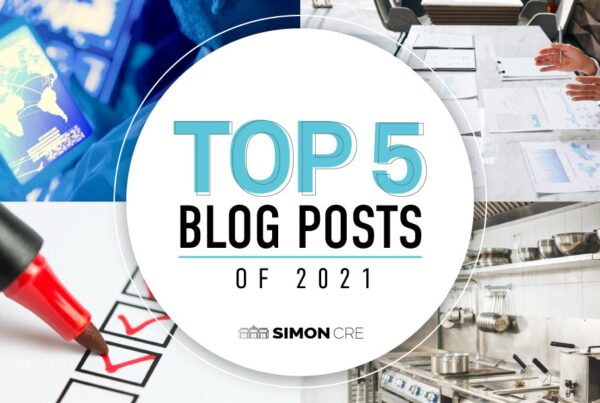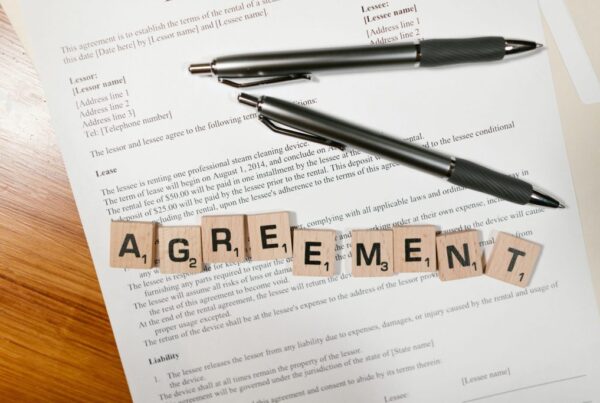This post originally appeared on SimonCRE Insights Blog and is republished with permission. Find out how to syndicate your content with theBrokerList.
No matter how active or passive you want to be in your investment, all commercial real estate investors should understand the objectives, risks, and rewards of each stage in a property’s life cycle.
Let’s break down the four main stages of a CRE investment and what is important to know at each.
Note: Your process may not always follow this formula; examples could include buying a property that is already stabilized, or a stabilized property becoming unstabilized and value-add/redevelopment efforts becoming recommended.
1 – Acquisition
Whether you’re going the ground up development route and looking to buy the land for your future property, or you’re seeking an existing building opportunity, you need to carefully evaluate all aspects of the prospective acquisition. But before taking on these major endeavors, spend adequate time selecting the right key players to guide you through the transaction. This may include but is not limited to a broker, financial analyst, legal counsel, developer, and financial partners – equity and debt (lender).
As a part of this stage, the site selection portion (if developing), includes a target market strategy with a comprehensive market analysis. If it is an existing property, you will need to underwrite the asset with a full financial analysis of current and future assumptions (including occupancy, rental income stream or net operating income (NOI), return on investment (ROI), taxes, CAM, utilities, etc.). For more details, read the Tips for Buying a Commercial Real Estate Property.
Once you’ve confirmed your interest for this property, it’s time to start the process of submitting, negotiating, and finally executing the letter of intent (LOI). This process can take anywhere from weeks to months in order to reach an agreement between the seller and prospective buyer, so keep that in mind. The executed LOI, while typically not legally binding upon the parties, outlines the primary terms that will be included in the purchase and sale agreement (PSA). The parties commence negotiations of the PSA following execution of the LOI.
If/when the purchase contract is executed, then the due diligence period will ensue. During this highly critical and time-restricted process, the goal is to work to expose both reported and unknown issues related to title, surveys, easements, encumbrances, liens, or restrictions that might affect the use of the property or its development. It is important to also look to uncover any issues with leases and tenants, including physical matters (for instance, a roof leak in the suite) and economic matters (i.e. a rent abatement that was not disclosed in the offering materials). Check out this article for a checklist of due diligence items to not miss.
2 – Value-Add
Now you’ve made it through the purchase and have achieved ownership of the property; however, your work isn’t done yet if your goal is to increase your NOI potential. Consider making upgrades to the property to add value. Physical improvements will assist in (i) promoting the leasing of any vacant spaces, (ii) increasing the quality of tenants, and (iii) increasing rental rates. Check out the Tips For Adding Value to a Retail Property for some specific examples.
Keep in mind, this value-add stage also includes analyzing ways to decrease operating expenses to increase revenue (property’s cash flow), and ultimately the value of the asset. This requires the right experience, so consider partnering with a developer that has a portfolio proving success in similar scenarios to yours.
3 – Stabilization
Once you’ve reached the stage of stabilization, congratulations on the lowered risk and more predictable cash flow you can now enjoy. The focus should now shift to more limited capital deployment and how to continue to maximize cash flow (NOI). Throughout the cycle, there should be ongoing evaluation and updates to the asset’s value in your records. Be sure to keep your projected cash flows up-to-date (including its marked value). With the main theme being stabilization in this stage, you should also account for the property’s depreciation annually for tax purposes.
During this late stage in the cycle, you should look to conduct an exit analysis. This will help determine the most advantageous time to sell the property which, based upon then-existing market conditions, might be before the property reaches the occupancy or income levels set forth in your initial business plan. Which leads us to our next point…
4 – Disposition
As alluded to in the previous stage, decide the right time to sell by taking into consideration the current state of the market, investment value (based on your calculations in the previous phase), and comps. While residential property may be more dependent on time of year, the fundamental financials, investment timing, and where we are in the CRE cycle overall (i.e. boom/bust) speak much louder for commercial properties.
The investment timing items to analyze include: (i) debt and loan maturity; (ii) future capital expenses such as roof, elevators, and parking lot; and (iii) future tenant lease expirations and vacancy. Although interest rates and liquidity are important, market timing based on sub-index factors like location and product type need to be taken into account too.
Study the current pattern of cap rates for recently sold properties that are similar to yours. What are the current trends for vacancy rates and rental rate growth? Also, research investor demand for that property type and desirability of that tenant mix (if applicable).
This overview of the main stages of the life cycle of a CRE property should provide you with a high-level, but clear understanding of the importance of each phase of your property and aid in your exit strategy decision.
|
|
Marc Altieri >Vice President of Leasing & InvestmentsMarc Altieri started at SimonCRE in 2021 as the Vice President of Leasing and Investments and is responsible for communications with tenants throughout the development process, coordination with brokers and buyers, and ensuring comprehensive due diligence leads to timely and accurate transactions. Other Posts by Marc:
|







